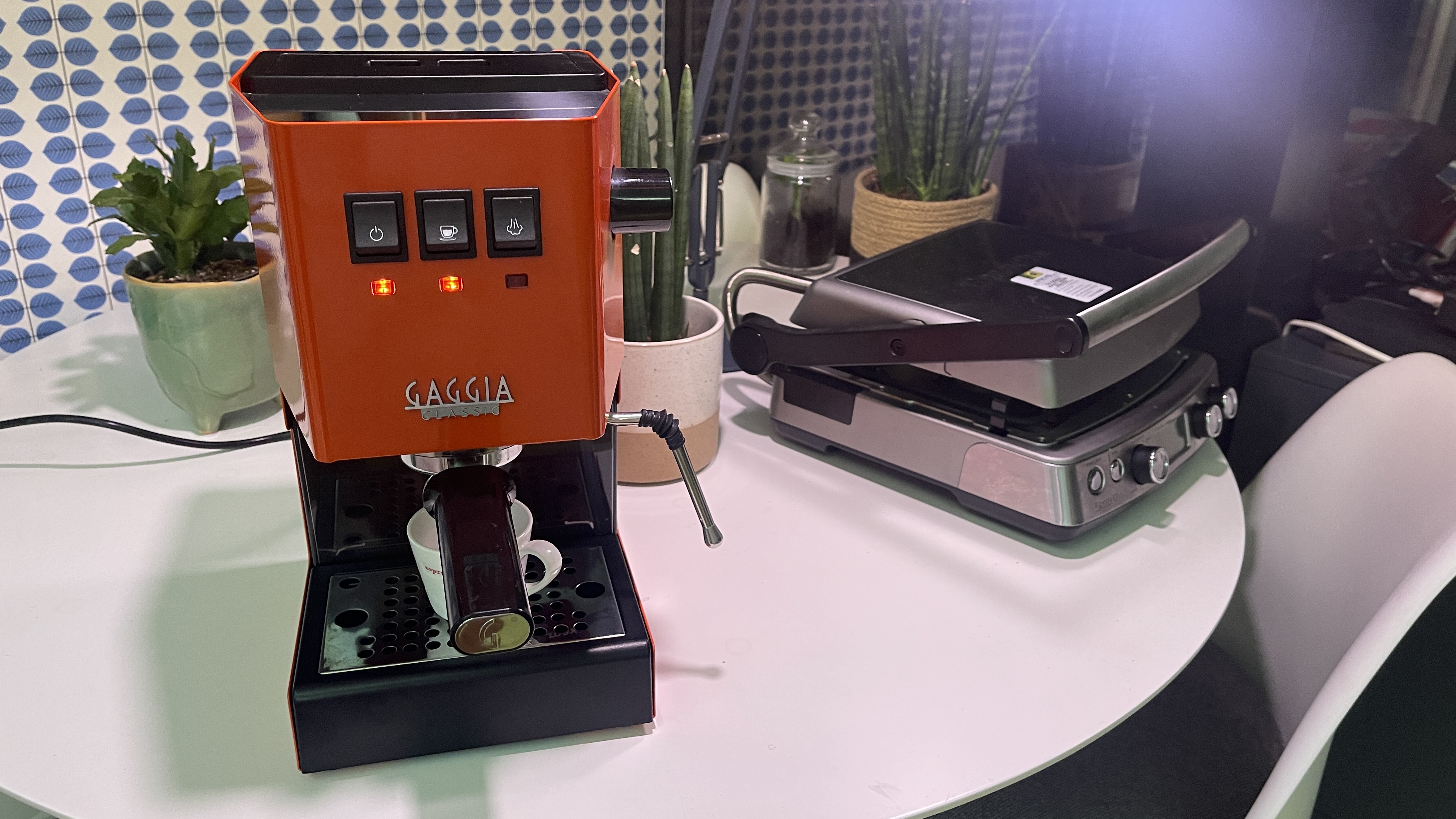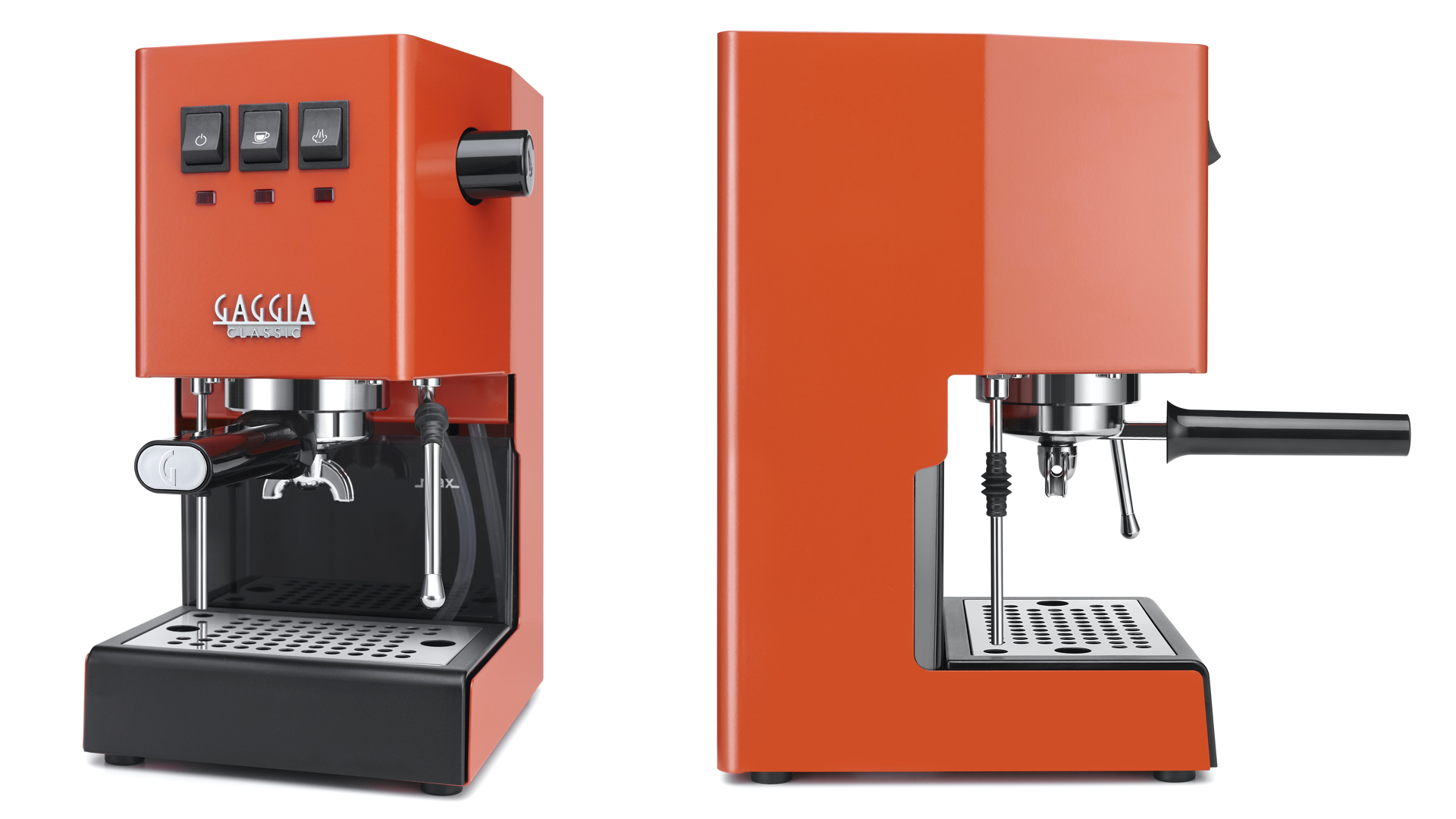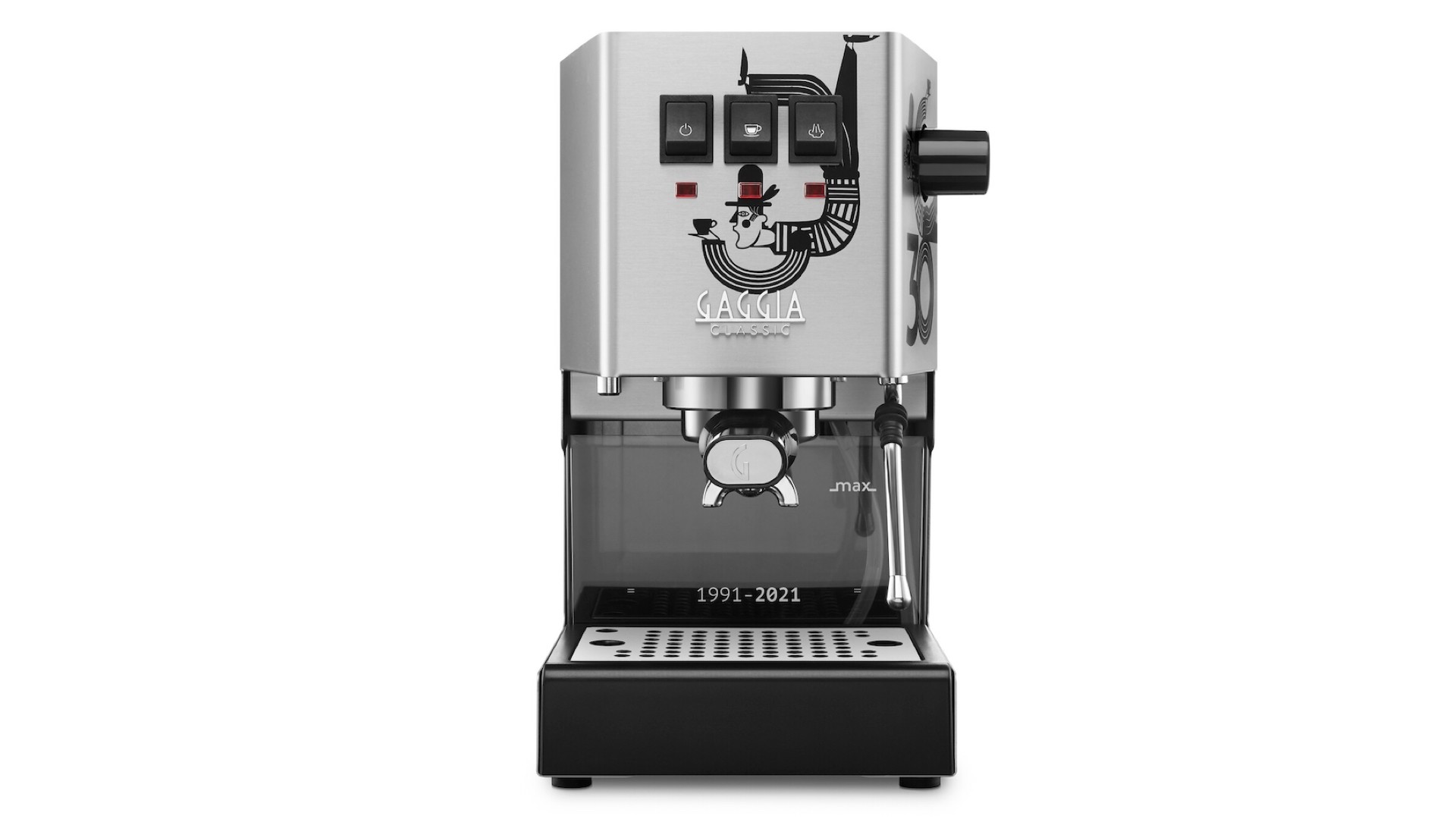If you're a real coffee lover this Classic could be the best espresso machine you'll ever buy
The Gaggia Classic has endured for over 30 years and is like the vinyl of coffee making


The Gaggia Classic is not like the coffee machines I usually use. Like most people, I've become addicted to digital convenience over the past decade. I love listening to music on vinyl – I even own a ridiculously expensive Technics record player – but I hardly ever actually do so, because it's such a faff compared to streaming. It's the same with coffee makers. Modern, more expensive, bean to cup espresso machines – I'm strictly an Italian espresso man; never French press or American pour over – are so easy to use, helping you out with every step of the process.
So I am not the most obvious person to try out the Gaggia Classic, which is available at Gaggia Direct in the UK, but god help me, I love it. It's la dolce vita. It's listening to The Who on a vintage turntable. It's donning your sharpest threads, getting pilled up in ‘space blues’ and riding your scooter to the seaside for a massive punch-up with some leather-clad rockers. And it comes in Lobster Red and features some very advanced solenoids.
The Classic was first made available in 1991 and was the successor to the Baby Gaggia, which the brand claims was the world's first ever mass-market espresso machine. 33 years in tech years is very old, obviously. It's quite old in most things' years. The reason it endures is partly down to a kind of retro fetishization, but mainly because it makes – excuse me – damn fine coffee. If I hadn't been kindly sent one to try by Gaggia, there is no way I'd try a machine like this because, as I say, I am addicted to digital ease and convenience. However, I am very glad I was given the chance to try it, and if you are a coffee lover who likes to be involved in every step of the espresso-making process, and who doesn't want their hand held along the way, this could be the very best espresso machine you can buy – at least without giving up large amounts of money and worktop space for a professional machine.
So what is it that makes the Gaggia Classic a classic? Let's find out…

Classic looks, red paint
So the Classic is from 1991, but the design of it means it must have looked out of time even when it launched. With its chunky switches, enigmatic knob on the side and exquisitely plasticky drip tray and water tank, it feels more like an 80s or even 70s design classic, especially in this fetching Lobster Red finish. Its habit of vibrating like an underground train is passing immediately below when you fire it up makes it seem even more dated. All modern espresso machines make a lot of noise, but few of them give you concern that your cup is going to wobble its way off the worktop as your espresso pours.
There are also little quirks like the water tank requiring you to push two rubber tubes into it when you set it up. This feels vaguely weird, but thanks to a water hatch on the top of the machine, you never really need to worry about it again once done. The steam wand is set so low that there is very little room to get an actual jug of milk under it. I eventually set it up on the edge of a table with the wand pointing off the edge, so I could manipulate it under the steam flow.
That aside, the Classic doesn't suffer too badly in comparison with the design of more modern machines. It heats up a little slower than today's super-funky, microprocessor-controlled bean to cup machines but it's nothing I couldn't cope with, and I am very impatient indeed
Get all the latest news, reviews, deals and buying guides on gorgeous tech, home and active products from the T3 experts
Moreover, I happen to think the bold, Lobster Red model looks better than just about any other coffee machine I've ever been sent. This beautifully retro machine would sit comfortably in the kitchen of Harry Palmer in The Ipcress File, or a raffish character from a Fellini film. Also, while the looks may be retro, you really know Gaggia’s machine is from a bygone era because its advertising dwells not on ease of use or convenience, but on the quality of its solenoids. In fact, there was apparently something of a kerfuffle in the Gaggia-using community a few years back because they changed the type of solenoids used in it. I know right?
There's no touchscreen. Instead, you are presented with three clearly labelled buttons with little red lights on that come on only when the machine warms up (the two on the right) or when you press them (the on/off one on the left). There's also a nondescript but tactile knob on the side, for your steaming needs.
This is how you make coffee with the Gaggia Classic: you fill the basket of the porta filter with as much ground coffee as you think it needs, then you wrestle it into place and turn on the button with a cup on it. When you think enough water has gone through the grounds, you turn it off again. Want water? Press the steam button, wait for the red light to come on, then texture your milk with the steam that comes out. The flow of steam is brutally powerful compared to what you get from most home coffee makers.

This 30th anniversary special edition is among the other options available
That is where the fun started for me. Although I normally use fancy, modern-day machines that do most of the barista legwork for you, I like to kid myself I have picked up the necessary skills over the years to make espresso manually.
Alas, the Gaggia Classic made it clear that I was a mere novice and bluffer, as the first cup I coaxed from it was what coffee aficionados would call ‘quite pissy’. When I then tried to make cappuccino – my favoured morning cup – I ended up with something quite pissy hidden under a mound of foam.
So I chucked that and tried again.
By my fourth stab at this I had something drinkable but still nowhere near as good as what my Sage The Barista Express Impress gives me every time with practically no effort on my part. However, I had to admit that there was an improvement curve.
The vinyl analogy really holds water with the Gaggia Classic. Positioning, setting up and fine tuning a record player can take a number of attempts. The records themselves, with their 20 minutes or so of music per side, require a lot more attention than a Spotify playlist and a wireless speaker. But a lot of people still love vinyl nonetheless.
As with vinyl appreciation, persistence is all with the Classic. With time, practice and advice from a Gaggia expert, I began to produce very drinkable beverages. A little more coffee in the basket here, a little more pressure applied with the iffy-but-functional plastic tamper before extracting there, a little more water… a little less water. A little more steam power – unusually for a domestic machine, you can vary the flow on this one – and then a little less. Eventually something near perfect was emerging, wrought from filtered water, a dose of about 15g of Illy Intenso tamped with way more force than I'd usually apply, and about 25-30 seconds of running water. My milk texturing skills were also improving as, indeed, they had to, given the odd position and impressive power of the steam wand.
Here is an example.

Not bad for an amateur
I have to confess I've since gone back to using a bean to cup machine. Partly because of convenience and partly because new ones keep arriving to be tried out. However, I am a convert to the Gaggia Classic despite – or perhaps because of – its retro quirks. If you're looking to develop proper barista skills and really learn the essence of making great coffee there is probably nothing better than this machine.
Do not, by the way, get this mixed up with cheap espresso machines. It does the same thing as them, but it is engineered to be far more consistent, and to produce vastly better results.
Modern bean to cups are hugely impressive bits of kit, but they don't have the flair or charm of this Italian machine. Take the time to master it and you'll be living the dolce vita, quaffing tiny cups of perfect espresso, before riding to the beach on a shiny scooter in a 3-piece suit. Ciao!
- Buy at Gaggia Direct, or see below for best deals near you

Duncan is the former lifestyle editor of T3 and has been writing about tech for almost 15 years. He has covered everything from smartphones to headphones, TV to AC and air fryers to the movies of James Bond and obscure anime. His current brief is everything to do with the home and kitchen, which is good because he is an excellent cook, if he says so himself. He also covers cycling and ebikes – like over-using italics, this is another passion of his. In his long and varied lifestyle-tech career he is one of the few people to have been a fitness editor despite being unfit and a cars editor for not one but two websites, despite being unable to drive. He also has about 400 vacuum cleaners, and is possibly the UK's leading expert on cordless vacuum cleaners, despite being decidedly messy. A cricket fan for over 30 years, he also recently become T3's cricket editor, writing about how to stream obscure T20 tournaments, and turning out some typically no-nonsense opinions on the world's top teams and players.
Before T3, Duncan was a music and film reviewer, worked for a magazine about gambling that employed a surprisingly large number of convicted criminals, and then a magazine called Bizarre that was essentially like a cross between Reddit and DeviantArt, before the invention of the internet. There was also a lengthy period where he essentially wrote all of T3 magazine every month for about 3 years.
A broadcaster, raconteur and public speaker, Duncan used to be on telly loads, but an unfortunate incident put a stop to that, so he now largely contents himself with telling people, "I used to be on the TV, you know."